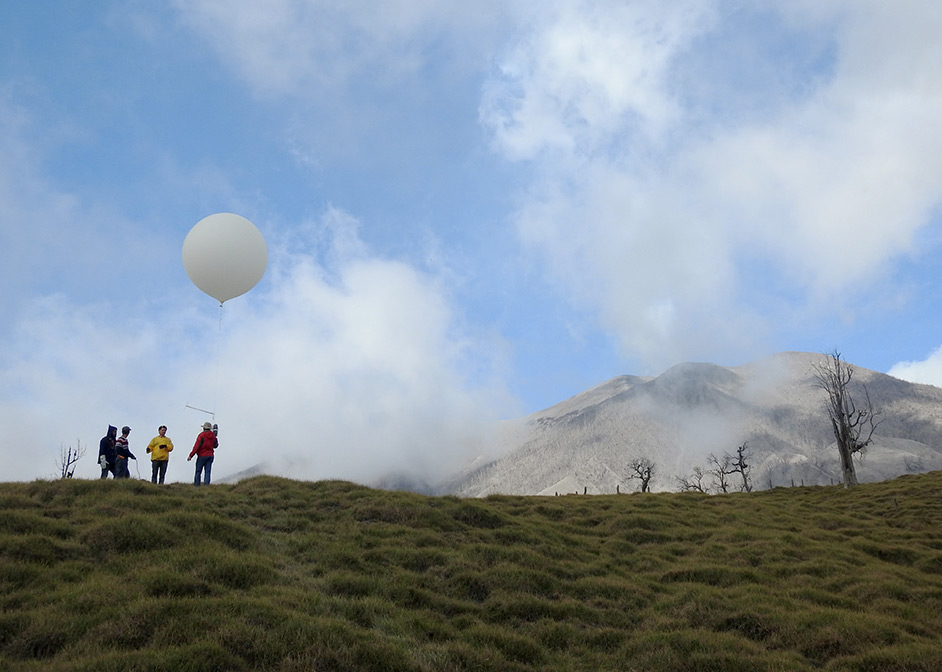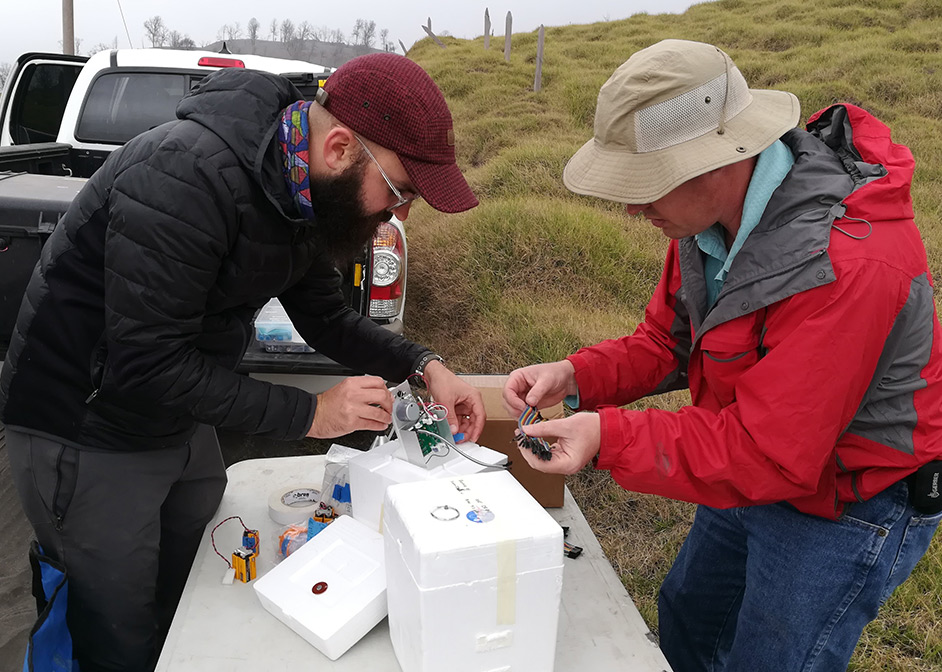Performed NASA-Funded Field Tests in Costa Rica and Hawaii
One of the major emissions from a volcanic eruption is sulfur dioxide, which causes acid rain within the region and forms reflective sulfate particles which get distributed throughout the atmosphere. The acid rain caused by an eruption has the effect of destroying livestock, agricultural crops and buildings within a region.

If the eruption is big enough, sulfate particles in the stratosphere can block sunlight, causing a global cooling which can persist for several years. A recent example is the 1991 eruption of Mt. Pinatubo, which caused global temperatures to cool by one degree Fahrenheit for several years, a significant effect in terms of climate impact.
Measuring Sulfur Dioxide Levels to Validate Climate Models
"Measuring sulfur dioxide emissions after a volcanic eruption is a major challenge," said James Flynn, research assistant professor in the University of Houston's Department of Earth and Atmospheric Sciences.
Flynn, along with collaborators, is working on a method to accurately measure sulfur dioxide immediately following a volcanic eruption, in order to enable better predictions about what the long-term effects will be. This new method was developed in collaboration with Gary Morris, St. Edward’s University dean of the School of Natural Sciences and professor of physics.
In two trips, funded by NASA through a Universities Space Research Association grant, Flynn and his collaborators traveled to the sites of two active volcanoes – Kīlauea in Hawaii, Turrialba in Costa Rica – to test out this new method.
“If we can better quantify the effects of eruptions on sulfate formation, then we have another tool to validate the climate models,” Flynn said.
Measuring Levels of Sulfur Dioxide a Major Challenge

Current methods include satellite and remote sensing measurements, which can tell the total amount of sulfur dioxide for any one location but does not give much information about vertical distribution. Other methods are indirect, using measurements of ozone to infer levels of sulfur dioxide.
“For this new method, we are measuring sulfur dioxide directly,” said Flynn, who has been in UH's College of Natural Sciences and Mathematics since 2006. “We’ve improved the detection limit by a factor of six.”
Measurements Possible Up to Seven Weeks after Eruption
Taking measurements at the site of a volcanic eruption means having to pack, ship and set up equipment, all within a quick time frame. With these recent field tests, the objective was to test this method’s portability and detection limit.
“We’ve improved the detection limit to where we can measure sulfur dioxide up to seven weeks after a volcanic eruption,” Flynn said. "Given the amount of time it takes to mobilize a field unit, this increased time span means we can get to an eruption in time to take measurements."
- Rachel Fairbank, College of Natural Sciences and Mathematics